Demonstrative Video
Concepts of First-Order Circuits
Problem-1
Determine the Time-constant of the network?
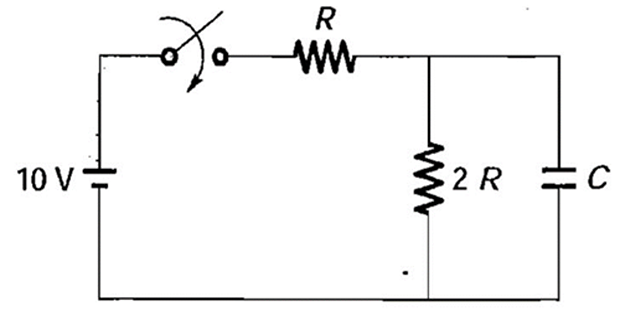
Solution-1
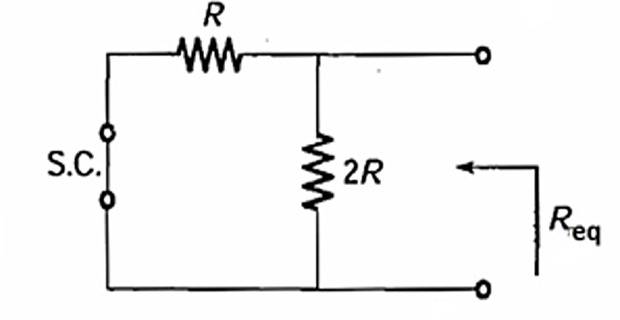
Problem-2
In the circuit shown, the initial capacitor voltage is 4 V. Switch \(S_1\) is closed at \(t=0\). Find the charge lost by the capacitor from \(t=25~\mu s\) to \(t=100~\mu s\) ?
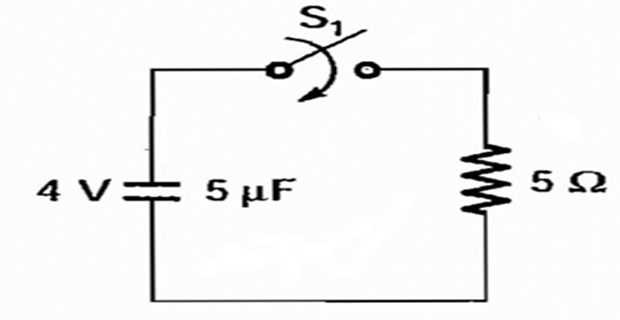
Solution-2
- \[\begin{aligned} \tau & = R\cdot C = 25\times 10^{-6}~\text{sec} \\ i(t) & = \dfrac{V}{R} e^{-t/\tau} = \dfrac{4}{5} e^{-t/\tau} \end{aligned}\]Current
- \[\begin{aligned} Q & = \int_{25~\mu s}^{100~\mu s} i(t) dt = 6.99\times 10^{-6}~\mathrm{C} \end{aligned}\]Charge lost by the capacitor:
Problem-3
\(S_1\) was closed and \(S_2\) was open for a very long time. At \(t=0\), \(S_1\) is opened and \(S_2\) is closed. Determine the voltage across the capacitor at \(t=5~\mu s\) ?
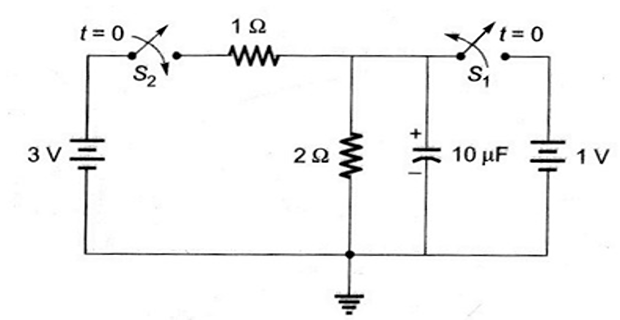
Solution-3
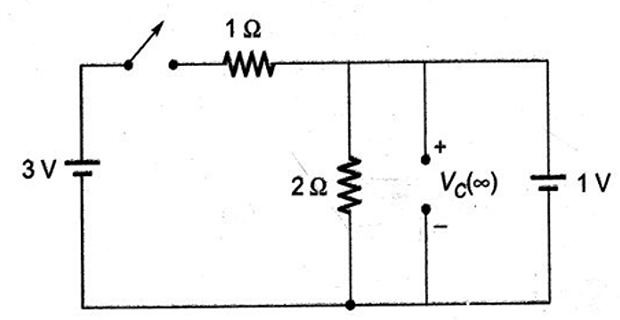
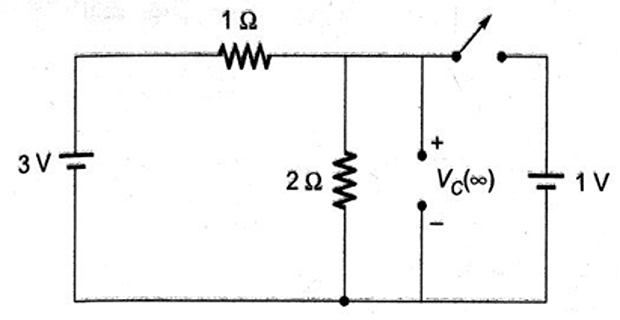
Problem-4
The switch in the figure below has been closed for a long time ,and it opens at \(t=0\) .Find \(V(t)\) for \(t \geq 0\)
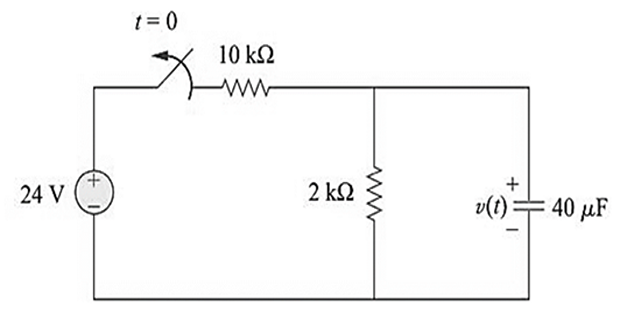
Solution-4
Problem-5
For the circuit in figure below, find \(v_0(t)\) for \(t > 0\) . Determine the time necessary for the capacitor voltage to decay to one-third of its value at \(t = 0\).
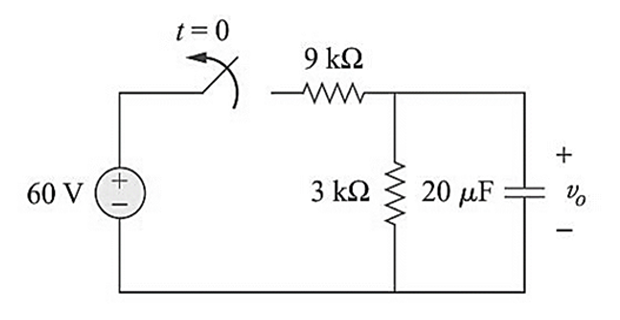
Solution-5
For \(\mathrm{t}<0\), \(v\left(0^{-}\right)=\frac{3}{3+9}(36 V)=9 V\)
- \[\begin{aligned} \tau=R C&=3 \times 10^{3} \times 20 \times 10^{-6} =0.06 s \\ v_{0}(t) &=9 \mathbf{e}^{-16.667 t} \mathbf{V} \end{aligned}\]circuit , we have a source-free For
- \[\begin{aligned} 3&=9 \mathrm{e}^{-16.667t_0}\\ \mathrm{e}^{16.667 t_0}&=9 / 3=3\\ t_0&=\ln (3) / 16.667=\mathbf{6 5 . 9 2} \mathbf{~ m s} \end{aligned}\]. Let the time be
Problem-6
Determine the current \(i(t)\) through the capacitor?
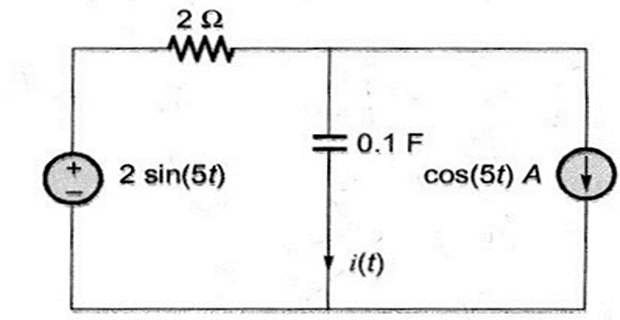
Solution-6
Applying Source Transformation
Problem-7
The capacitor shown in the figure is initially charged to 10 V. The switch closes at time \(t=0\) . Find the value of \(V_c(t)\) in volts at time \(t=10\) ms ?
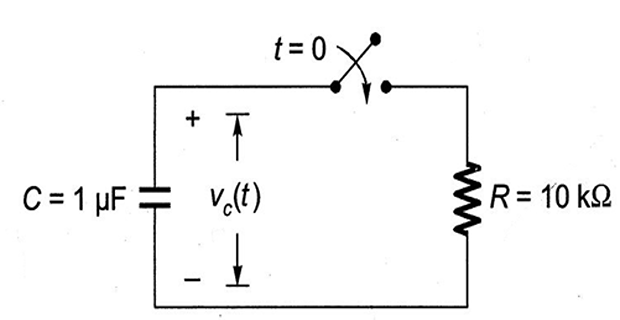
Solution-7
Problem-8
In Figure, the capacitor initially has a charge of 10 coloumb. The current in the circuit 1 second after the switch ‘S’ is closed will be
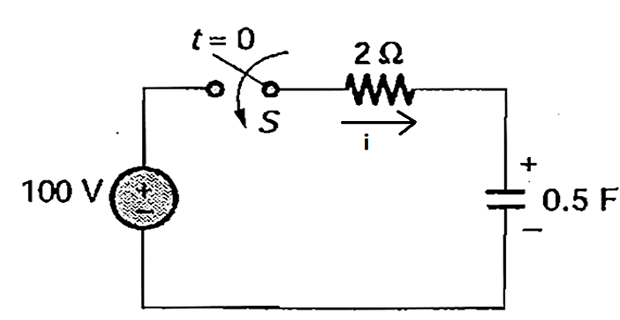
Solution-8
Problem-9
The initial charge in the 1F capacitor present in the circuit shown is zero. Find the energy in joules transformed from the DC source until steady state condition is reached?
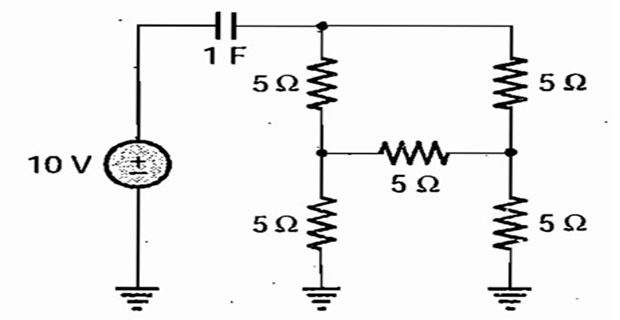
Solution-9
DELTA \(\rightarrow\) STAR
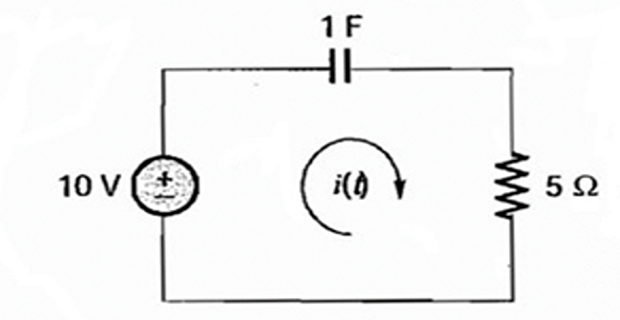
Problem-10
Find the energy absorbed by the 4 \(\Omega\) in time interval \(( 0, \infty)\) ? . Given \(V_c(0) = 6\) V
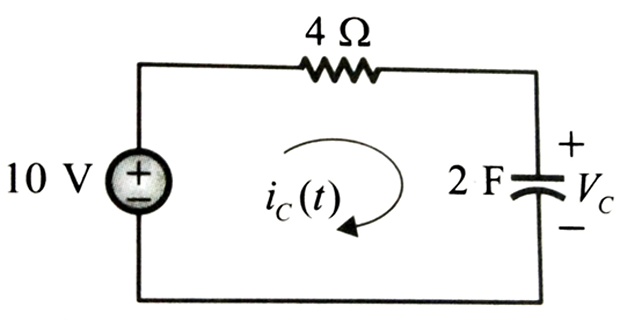
Solution-10
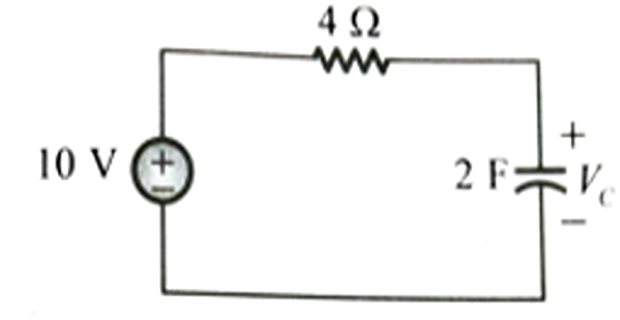
RL Circuits
Problem-11
Assuming that \(i(0)\)=10 A, Calculate \(i(t)\) and \(i_x(t)\)
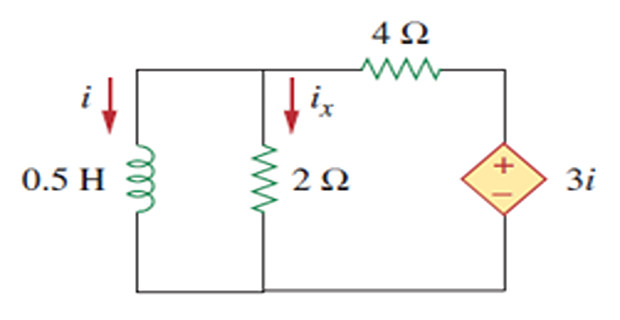
Solution-11
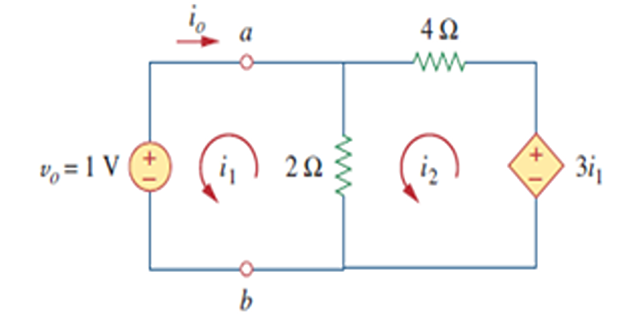
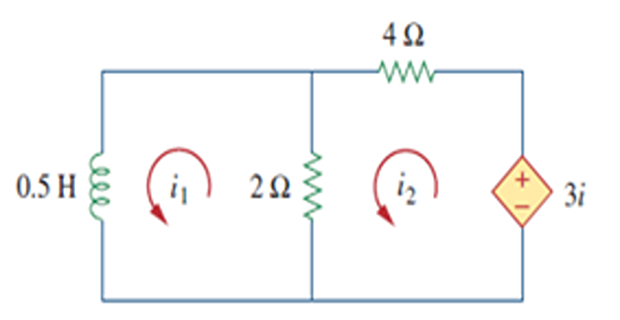
Problem-12
The switch has been closed for a long time. At \(t=0\), the switch is opened. Calculate \(i(t)\) for \(t>0\).
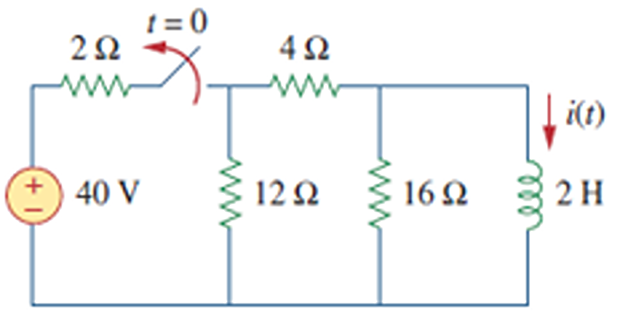
Solution-12
\(t<0~\Rightarrow~S~\text{closed}~\Rightarrow ~L\) short \(\Rightarrow~16\Omega\) short
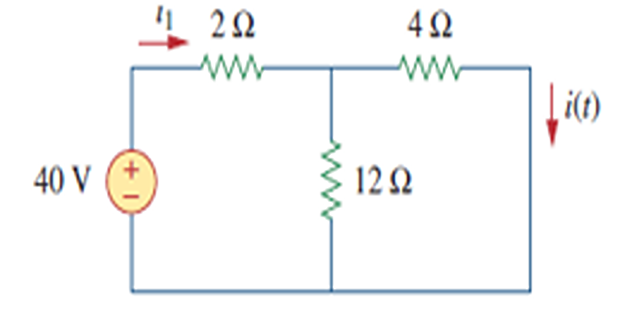
Problem-13
Find \(i_0\), \(v_0\), and \(i\) for all time , assuming that the switch was open for a long time.
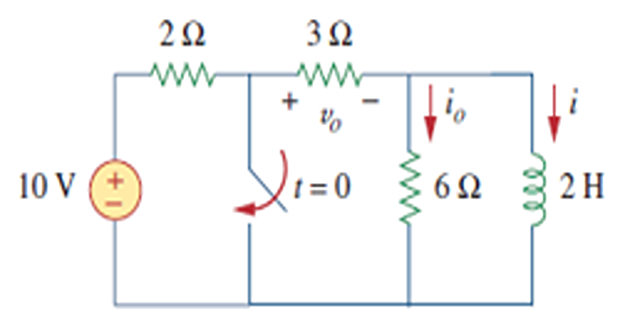
Solution-13
\(t<0~\Rightarrow~S~\text{open}~\Rightarrow ~L\) short \(\Rightarrow~6\Omega\) short
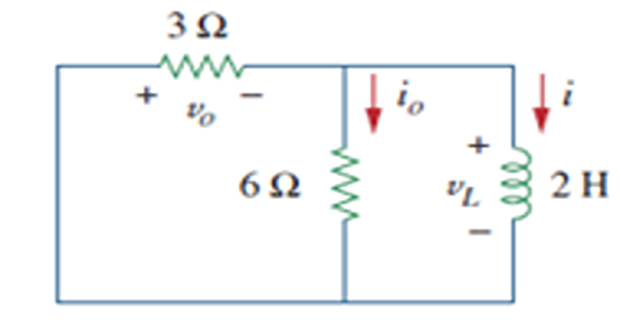
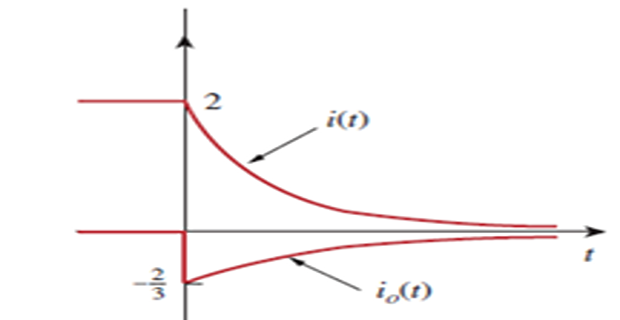
Problem-14
At \(t=0\), switch-1 is closed, and switch-2 is closed 4 s later. Find \(i(t)\) for \(t>0\). Calculate \(i\) for \(t=2\) s and \(t=5\) s.
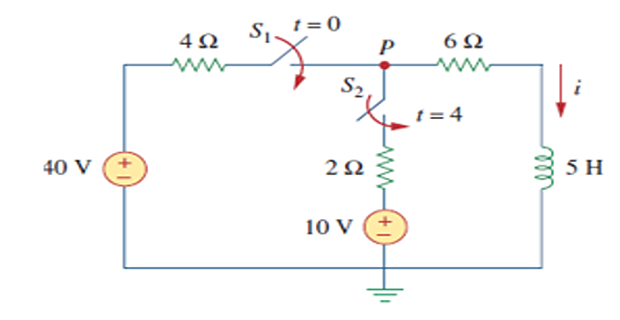
Solution-14
Intervals \(t \leq 0,0 \leq t \leq 4\), and \(t \geq 4\) separately.
For \(t<0\), \(S_{1}\) and \(S_{2}~\Rightarrow\) open \(\Rightarrow i=0\).
\(i\left(0^{-}\right)=i(0)=i\left(0^{+}\right)=0\)
For \(0 \leq t \leq 4, ~S_{1}\) closed \(\Rightarrow 4-\Omega\) and \(6-\Omega\) are in series. (Remember, at this time, \(S_{2}\) is still open.)
- \[\begin{gathered} i(\infty)=\frac{40}{4+6}=4 \mathrm{~A}, \quad R_{\mathrm{Th}}=4+6=10 \Omega \\ \tau=\frac{L}{R_{\mathrm{Th}}}=\frac{5}{10}=\frac{1}{2} \mathrm{~s} \end{gathered}\]is closed forever, Hence, assuming for now that
- \[\begin{aligned} i(t) &=i(\infty)+[i(0)-i(\infty)] e^{-t / \tau} \\ &=4+(0-4) e^{-2 t}=4\left(1-e^{-2 t}\right) \mathrm{A}, \quad 0 \leq t \leq 4 \end{aligned}\]Thus,
For \(t \geq 4, ~S_{2}\) closed \(\Rightarrow\)10 - V connected.
- \[i(4)=i\left(4^{-}\right)=4\left(1-e^{-8}\right) \simeq 4 \mathrm{~A}\]This sudden change does not affect the inductor current because the current cannot change abruptly. Thus, the initial current is
- \[\begin{gathered} \frac{40-v}{4}+\frac{10-v}{2}=\frac{v}{6} \quad \Rightarrow \quad v=\frac{180}{11} \mathrm{~V} \\ i(\infty)=\frac{v}{6}=\frac{30}{11}=2.727 \mathrm{~A} \end{gathered}\]. Using KCL, be the voltage at node , let To find
- \[R_{\mathrm{Th}}=4 \| 2+6=\frac{4 \times 2}{6}+6=\frac{22}{3} \Omega\]\[\tau=\frac{L}{R_{\mathrm{Th}}}=\frac{5}{\frac{22}{3}}=\frac{15}{22} \mathrm{~s}\]The Thevenin resistance at the inductor terminals is
- \[i(t)=i(\infty)+[i(4)-i(\infty)] e^{-(t-4) / \tau}, \quad t \geq 4\]Hence,
- \[\begin{array}{rlr} i(t) & =2.727+(4-2.727) e^{-(t-4) / \tau}, & \tau=\frac{15}{22} \\ & =2.727+1.273 e^{-1.4667(t-4)}, & t \geq 4 \end{array}\]in the exponential because of the time delay. Thus, We need
- \[i(t)= \begin{cases}0, & t \leq 0 \\ 4\left(1-e^{-2 t}\right), & 0 \leq t \leq 4 \\ 2.727+1.273 e^{-1.4667(t-4)}, & t \geq 4\end{cases}\]\[i(5)=2.727+1.273 e^{-1.4667}=3.02 \mathrm{~A}\]\(t=5\)\[i(2)=4\left(1-e^{-4}\right)=3.93 \mathrm{~A}\]\(t=2\)Putting all this together,